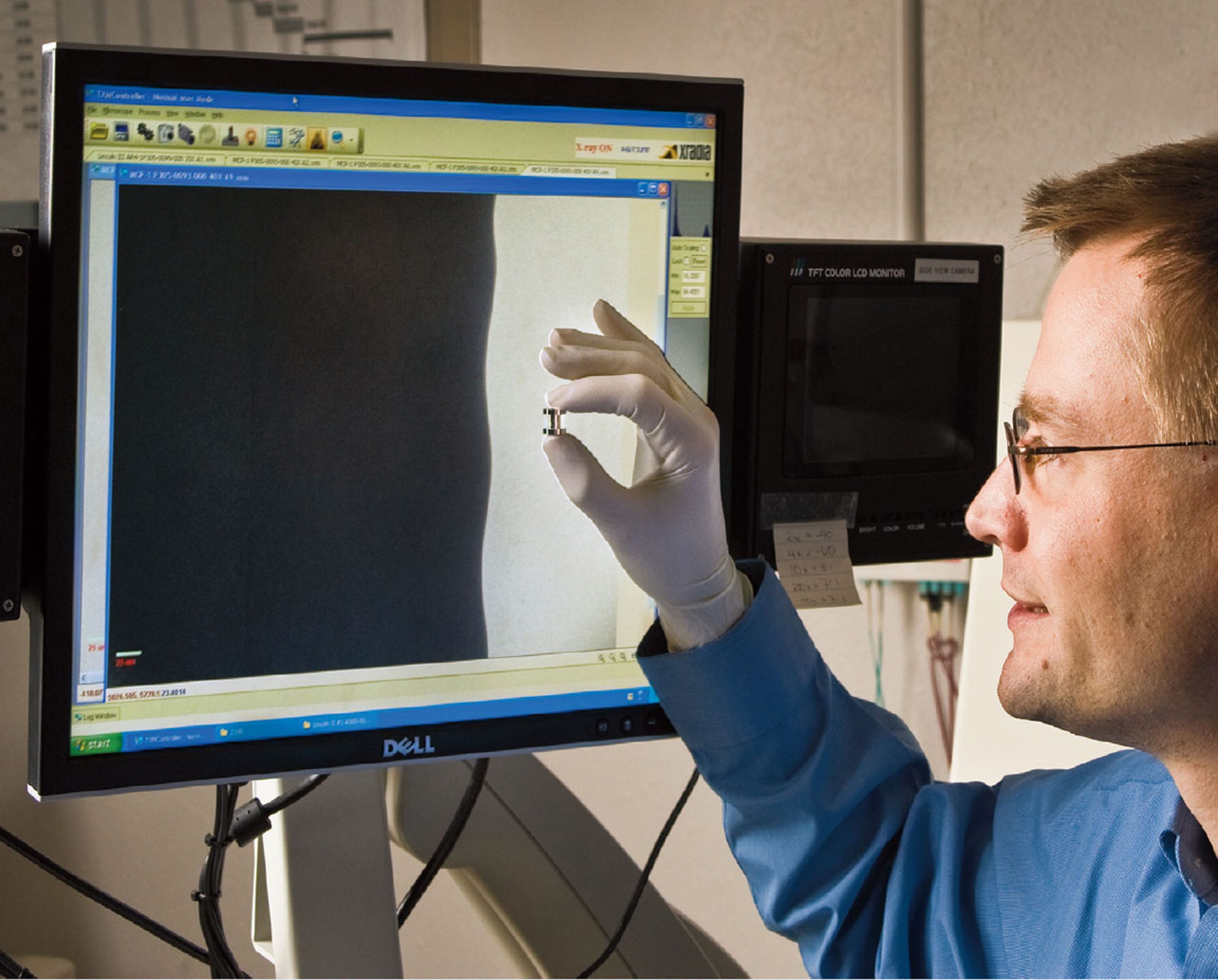ALBUQUERQUE, N.M. — Pursuing a fruitful line of inquiry, Sandia National Laboratories researcher Dan Sinars has been awarded a $2.5 million, five-year “Early Career Research Program” award for measuring fundamental instabilities in magnetically driven Z-pinch explosions.
Sinars’ team was the first to capture, in a series of 3-D images separated by nanoseconds, the undesirable but apparently unavoidable appearance of a damaging instability called Magneto-Rayleigh-Taylor, or MRT, in Z-pinch magnetic fields. Those fields could be the key to fusing atoms to create a potentially limitless source of electrical energy.
His application to the Department of Energy’s (DOE’s) Office of Science proposed a two-pronged approach to continue his earlier investigations, published last year in Physical Review Letters.
One prong will study the instability’s growth through generation of well-controlled perturbations combined with high-resolution observations. The second prong will study the conditions needed to mitigate the bugbear of MRT growth.
Because these problems have never been systematically studied at the level of experimental accuracy required to validate relevant computer codes, the scientific merit of the proposed project was considered very high by DOE reviewers.
Specifically, according to one reviewer, “The proposed research directly addresses an important and poorly understood phenomenon relevant to the evolution of rapidly compressed matter. The results of this research would significantly impact high energy density plasmas, inertial confinement fusion and related fields. It would provide significant opportunity for comparison and improvement of at least three important simulation codes.”
Another DOE reviewer wrote, “…[T]he data available for the experimental validation of the MHD [magnetohydrodynamics] code simulations and theoretical predictions is very scarce. Actually, it consists mostly of the results obtained by Dr. Sinars and his collaborators from [Sandia] in their experiments on Z dedicated to accurately measuring the MRT….”
DOE defines “early career” as a principal investigator who is within 10 years of having received a doctorate, and is a full-time, permanent, non-postdoctoral employee of a DOE national laboratory. Out of 1,150 applications, only 65 were awarded.
Sinars earlier received the 2007 IEEE Nuclear Plasma Sciences Society Early Achievement Award “for contributions to radiographic measurements of high energy density physics experiments on the [Sandia] 20 MA[mega-amp] Z pulsed-power generator, including wire-array [Z]-pinches, inertial confinement fusion capsules and complex hydrodynamics targets.” He also earned the 2007 National Nuclear Security Administration Defense Programs Award of Excellence for Z-pinch predictive simulation capability.

